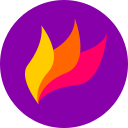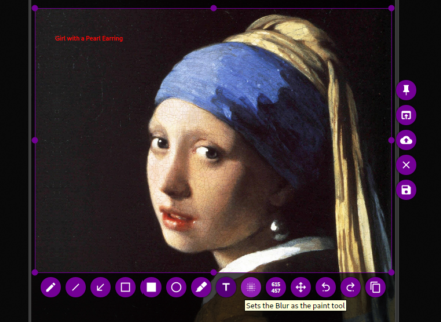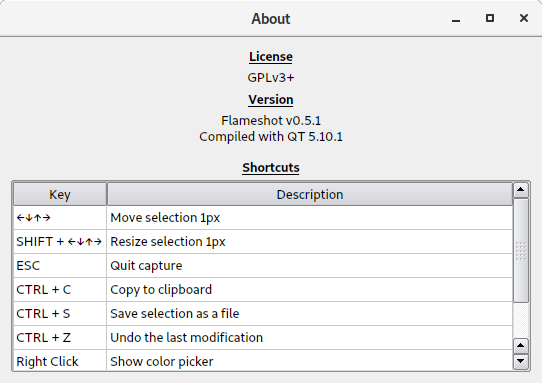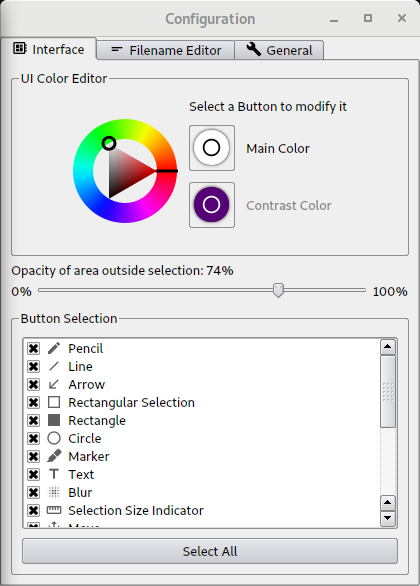Last Updated on September 25, 2020
 Being able to take a screenshot comes in handy so many times. Linux is blessed with a good range of competent screenshot software. One which has recently caught our attention is Flameshot, an easy to use, open source, Qt-based screenshot utility which is adept at capturing custom areas of a desktop.
Being able to take a screenshot comes in handy so many times. Linux is blessed with a good range of competent screenshot software. One which has recently caught our attention is Flameshot, an easy to use, open source, Qt-based screenshot utility which is adept at capturing custom areas of a desktop.
It’s a complete screen capture and snipping tool with some unique and interesting features. We didn’t think a screenshot tool could capture (no pun intended) our attention this much!
Installation
Besides the source code, there are packages available for various Linux distributions including Fedora, Debian, Ubuntu, Arch, openSUSE, and Void Linux. I installed the software using the package in the Arch User Repository on Manjaro, a distribution which is based on Arch.
For other distributions, there’s the convenience of an AppImage package. AppImage is a format for distributing portable software on Linux without requiring superuser permissions to install the application.
In operation
You can run flameshot from the command-line or invoke a screen grab from the systray icon. The command-line gives you ultimate flexibility for scripting or automating screen captures. But there’s plenty of functionality from the desktop too.

There’s a wide range of annotating tools available including freehand drawing, lines, arrows, boxes, circles, and highlighting. The colour can be customized, together with the size and/or thickness of many of the annotation tools. The latest code also adds a text tool, as well as a pin tool.
If you need to hide any sensitive information from a screen grab, there’s a blur function too. It’s handy to know the size of a screenshot before capturing the image. Fortunately, there’s a selection size indicator included.
You can also move the capture area, undo/redo an action, as well as the essential copy and save functions (with a variety of image formats). There’s even an option to save a capture to the cloud. The choice is limited to Imgur.

GUI keyboard shortcuts are implemented in the software.
There’s a good range of configuration options available including including the ability to set the opacity of the area outside the selection, and hide/show the various buttons.. I also like the option to set the file naming template using common variables (full date, day of month, day name, month, week, time and so on).

Other features:
- Use at the terminal.
- Full screen capture with custom save path (no GUI) with a delay option.
- Easy to use.
- For command-line users, there Bash completion which lets you complete a command with the tab key.
- In-app screenshot edition.
- Undo/Redo with Ctrl+z and Ctrl+Shift+z.
- DBus interface.
- Option to start the software automatically on boot.
- Sidebar with color selector.
- Delete Imgur image button after uploading it from the preview window.
- “Take Screenshot” option as menu item in the systray.
- Unification of the desktop file with actions.
- Allows systray customization with themes.
- Multiple monitor support.
- Internationalization support – there are very good translations for Catalan, Chinese (Simplified), Chinese (Traditional), French, Georgian, Hungarian, Polish, Russian, Spanish, and Turkish.
Summary
flameshot is an excellent utility for capturing custom areas of a desktop. It’s really easy to use, has a good range of annotation tools which have recently been expanded, and is sleek. There’s even experimental support for Wayland (Gnome and Plasma 5).
The project’s roadmap whets our appetite for more goodness.
Website: github.com/lupoDharkael/flameshot
Support:
Developer: Alejandro Sirgo Rica & contributors
License: GNU General Public License v3.0
flameshot is written in C++. Learn C++ with our recommended free books and free tutorials.
Return to Screen Capture Home Page
| Popular series | |
|---|---|
| The largest compilation of the best free and open source software in the universe. Each article is supplied with a legendary ratings chart helping you to make informed decisions. | |
| Hundreds of in-depth reviews offering our unbiased and expert opinion on software. We offer helpful and impartial information. | |
| The Big List of Active Linux Distros is a large compilation of actively developed Linux distributions. | |
| Replace proprietary software with open source alternatives: Google, Microsoft, Apple, Adobe, IBM, Autodesk, Oracle, Atlassian, Corel, Cisco, Intuit, and SAS. | |
| Awesome Free Linux Games Tools showcases a series of tools that making gaming on Linux a more pleasurable experience. This is a new series. | |
| Machine Learning explores practical applications of machine learning and deep learning from a Linux perspective. We've written reviews of more than 40 self-hosted apps. All are free and open source. | |
| New to Linux? Read our Linux for Starters series. We start right at the basics and teach you everything you need to know to get started with Linux. | |
| Alternatives to popular CLI tools showcases essential tools that are modern replacements for core Linux utilities. | |
| Essential Linux system tools focuses on small, indispensable utilities, useful for system administrators as well as regular users. | |
| Linux utilities to maximise your productivity. Small, indispensable tools, useful for anyone running a Linux machine. | |
| Surveys popular streaming services from a Linux perspective: Amazon Music Unlimited, Myuzi, Spotify, Deezer, Tidal. | |
| Saving Money with Linux looks at how you can reduce your energy bills running Linux. | |
| Home computers became commonplace in the 1980s. Emulate home computers including the Commodore 64, Amiga, Atari ST, ZX81, Amstrad CPC, and ZX Spectrum. | |
| Now and Then examines how promising open source software fared over the years. It can be a bumpy ride. | |
| Linux at Home looks at a range of home activities where Linux can play its part, making the most of our time at home, keeping active and engaged. | |
| Linux Candy reveals the lighter side of Linux. Have some fun and escape from the daily drudgery. | |
| Getting Started with Docker helps you master Docker, a set of platform as a service products that delivers software in packages called containers. | |
| Best Free Android Apps. We showcase free Android apps that are definitely worth downloading. There's a strict eligibility criteria for inclusion in this series. | |
| These best free books accelerate your learning of every programming language. Learn a new language today! | |
| These free tutorials offer the perfect tonic to our free programming books series. | |
| Linux Around The World showcases usergroups that are relevant to Linux enthusiasts. Great ways to meet up with fellow enthusiasts. | |
| Stars and Stripes is an occasional series looking at the impact of Linux in the USA. | |
What does this do that the standard screenshot utility shipped with most Linux DEs doesn’t? Why reinventing the wheel (again) rather than doing something original?
Maybe if you read the article, you’ll see the delights that flameshot offers over basic screengrabbing software?
Almost all software isn’t ‘original’. It’s not reinventing the wheel, it’s creating the best wheel.
You cannot even begin to compare this with everything else out there. For a power user requiring capture of portions of the screen for everyday work with annotation capabilities there is simply nothing that competes with this tool. Check out windows sniping tool. It’s a power-user-tool. Simple, efficient. perfect. Same as this flameshot.
And to answer your question: before discovering this tool I was contemplating starting to write my own screen capture app because I was frustrated with the limited features and in-the-way interface of every other tool out there.
It’s a great tool, just wish it offers the ability to capture the active window. Development of this feature has been on the cards for ages, but still no progress?